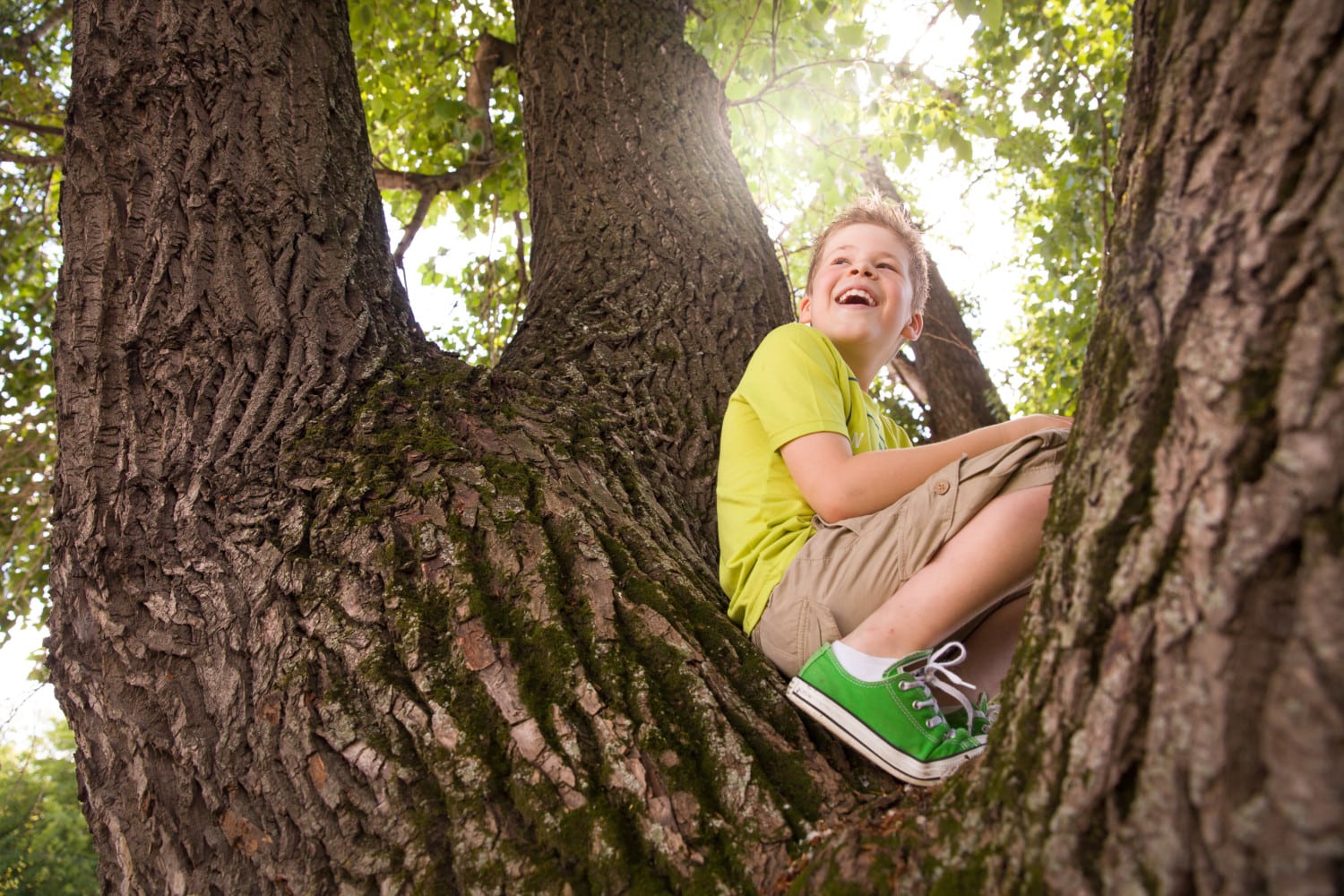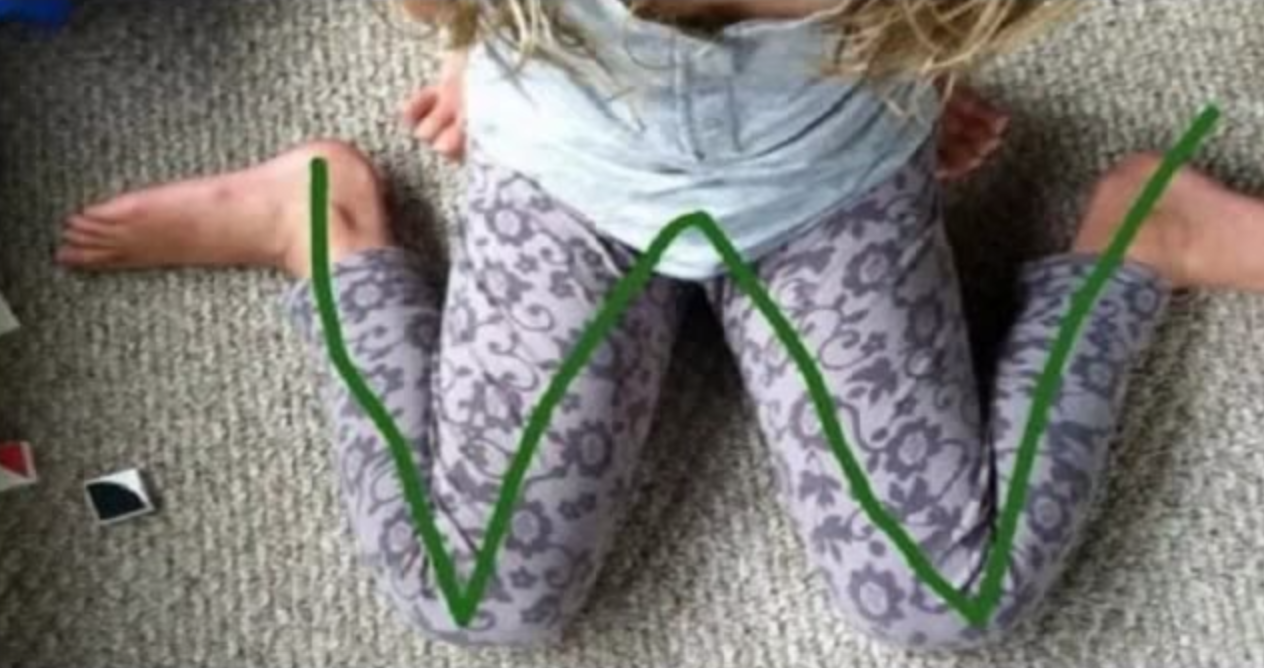Is ‘W-Sitting’ Really That Bad For Your Child? Experts Weigh In
Chances are you’ve seen kids contort themselves into all kinds of crazy positions. In my house, bedtime seems to bring out some of the zanier ones (bedtime reading is better enjoyed via a backbend, evidently).
But there’s one position—”W-sitting”—that has been the cause for alarm as of late. W-sitting refers to the seated position you’ll often see kids take with their knees turned inward and their feet flared out to next to their hips, as shown above. Generally, their bottom rests on the floor in between their legs.
The Problem With W-Sitting
Good Housekeeping recently promoted an article with the alarming title, “If Your Child Ever Sits In This Position, Stop Them Immediately.” In it, the author outlines how W-sitting can be detrimental to a child’s development later in life. Specifically:
According to the Pediatric Therapy Center, children who continue sitting in this position after their 2nd birthday may not properly develop the core strength and balance they need for certain motor skills, like jumping and running. It may also leave muscles tight in the legs, hips, and ankles, as well as possibly leading to a hip dislocation.
Yikes.
Not only that, but extensive use of this sitting position could leave your child “pigeon-toed,” meaning they walk with their toes turned in.
The Pediatric Therapy Center is an occupational therapy center based in Nebraska, and their concern seems to echo that of other occupational and physical therapists, as well as chiropractors. One chiropractor, Ryan Curda, DC, expanded on the cause for concern to SheKnows:
Curda says the position limits the need for a toddler to develop trunk stability while they focus on other things. That stability is necessary for developing balance and coordination, which is why the position can be linked to developmental delays.
“Unfortunately, this leads to further trunk instability and delays the development of proper balance, cross body movements, and even playing across the midline on table-top activities,” says Curda.
What The Doctors Have To Say
As important as the proper development of muscles and joints is, as the mother of a child who will often sit in the “W” shape, I was relieved to read that medical doctors generally don’t share the same sense of alarm.
Today interviewed Dr. Eduardo Novais, an orthopedic surgeon at Boston Children’s Hospital, and Dr. Jennifer Weiss, a pediatric orthopedic surgeon at Kaiser Permanente in Los Angeles. Their consensus? It’s not really that big of a deal.
Weiss told Today that, in her opinion, parents should “absolutely not” worry. “I have no problem with a child W-sitting,” she said. “They’re not going to change the shape of their legs. They’re not going to change their alignment by sitting like that. They’re just responding to their natural anatomy.”
Novais agreed, however he made the important distinction that while it’s “common for normal, healthy kids to sit in a W position,” doctors “also see W sitting in kids who have other disorders.”
When To Really Be Concerned
Dr. Novais said cases where further attention is required include those where—in addition to W-sitting—”you see your child develop a limp, a weakness in the lower extremities, or a pigeon-toed gait.” Hip dysplasia would be one concern in this situation, as well as hypotonia (low muscle tone).
What To Do
If you are concerned about your child’s W-sitting, be sure to broach the topic with your child’s pediatrician. While it’s common to see kids between the ages of 4 and 6 sitting in the W-position (Today reports that kids tend to stop sitting like this after age 8), there’s all sorts of research that supports the benefits tied to building a strong core. Among them? Less back pain and a lower risk of injury.
With that in mind, if you can help your child sit comfortably in a position other than W-sitting — with criss-crossed legs, for example, or legs together with feet out to the side — it could be something worth approaching.

If you do plan to correct your child’s W-sitting, the advice from one therapist rang most true with me and maybe it will for you as well:
“I have come across several articles recently that suggest that you tell your child NO or that you insist your child sit differently every time you find her sitting in the ‘W’ position,” Buffy Owens, GCFP, writes in this article on ConsciousMovements.com. “But I am here to say that the No-No approach deprives both you and your child of valuable learning.”
Instead, Owens suggests you engage your child in movement and poses that will help them strengthen the muscles that may be neglected when W-sitting. For example, encouraging children to climb or mimic the motions of animals can help develop body coordination. Check out the article for some of her recommendations on this front.

In other words, make it more about play and less about correction. Most importantly, find what works best for you and your child.









